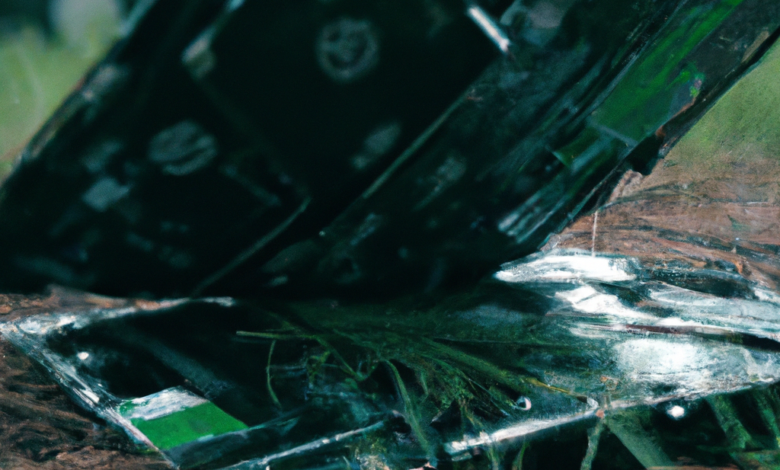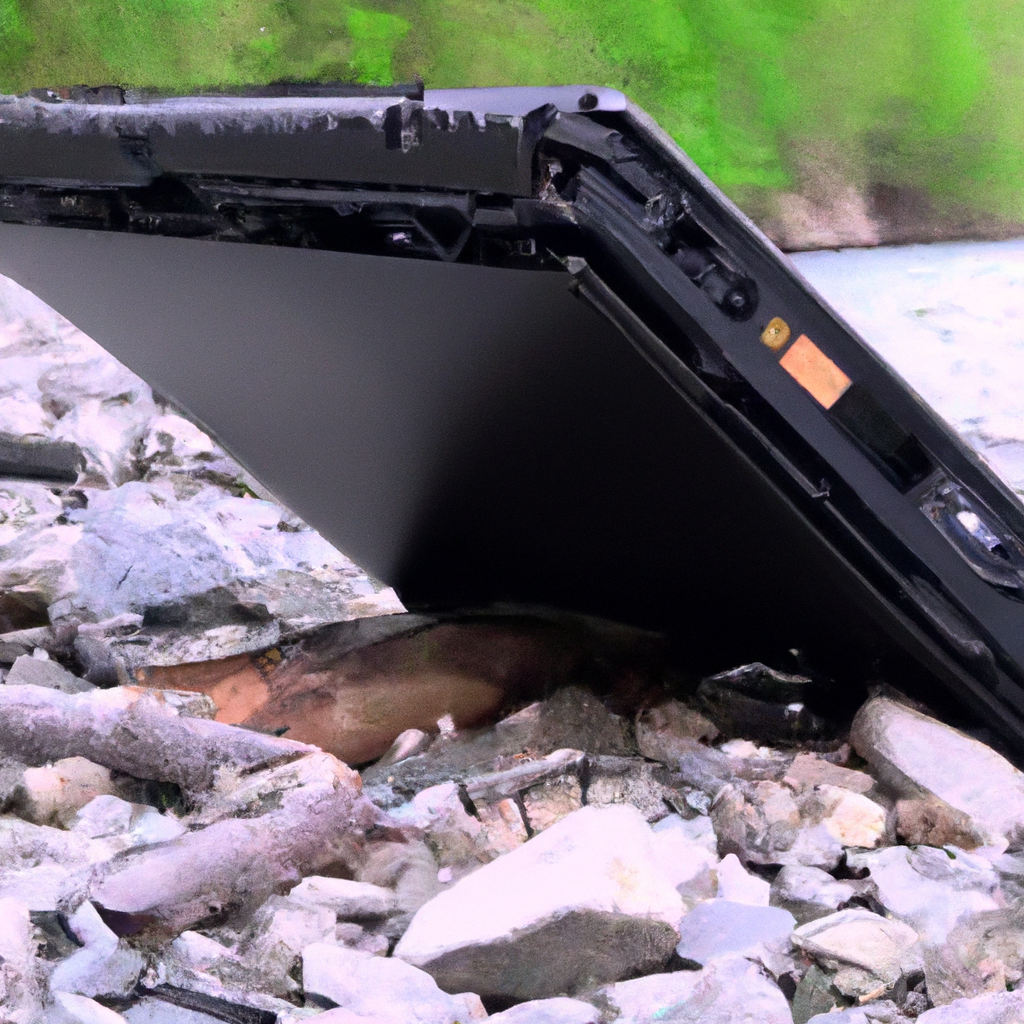How to recycle your Laptop

-
Table of Contents
“Recycle your laptop: A sustainable solution for a greener future.”
Introduction
Introduction: Recycling your laptop is an environmentally responsible way to dispose of electronic waste. By recycling, you can help reduce the negative impact on the environment and conserve valuable resources. In this guide, we will provide you with step-by-step instructions on how to recycle your laptop properly.
The Importance of Recycling Your Laptop
In today’s fast-paced world, technology is constantly evolving. New gadgets and devices are being released every year, making our lives easier and more convenient. However, with this rapid advancement comes a downside – electronic waste. As we upgrade our laptops, tablets, and smartphones, the old ones often end up in landfills, contributing to the growing problem of electronic waste. This is why recycling your laptop is not only important but also essential for a sustainable future.
The first reason why recycling your laptop is crucial is because of the harmful materials it contains. Laptops are made up of various components, including batteries, circuit boards, and screens, all of which contain toxic substances such as lead, mercury, and cadmium. When these materials are not properly disposed of, they can seep into the soil and water, polluting the environment and posing a threat to human health. By recycling your laptop, you ensure that these hazardous materials are safely extracted and disposed of, preventing them from causing harm to the planet and its inhabitants.
Another reason why recycling your laptop is important is because it conserves valuable resources. Laptops are made from a variety of materials, including metals like aluminum and copper, as well as precious metals like gold and silver. By recycling your laptop, these materials can be extracted and reused in the production of new devices, reducing the need for mining and the associated environmental damage. Recycling just one laptop can save enough energy to power a lightbulb for over a month, highlighting the significant impact that recycling can have on resource conservation.
Recycling your laptop also helps to reduce greenhouse gas emissions. The production of electronic devices requires a significant amount of energy, which often comes from fossil fuels. By recycling your laptop, you reduce the demand for new devices, thereby reducing the energy consumption and greenhouse gas emissions associated with their production. Additionally, recycling reduces the need for raw materials, which further reduces the energy required for extraction and processing. By choosing to recycle your laptop, you are taking a small but important step towards mitigating climate change and creating a more sustainable future.
Furthermore, recycling your laptop can also have economic benefits. Many electronic manufacturers offer recycling programs where you can trade in your old laptop for a discount on a new one. This not only helps to offset the cost of purchasing a new device but also encourages responsible consumption and waste management. Additionally, recycling creates jobs in the recycling industry, contributing to the local economy and providing employment opportunities. By recycling your laptop, you are not only helping the environment but also supporting a sustainable and thriving economy.
In conclusion, recycling your laptop is not just a responsible choice, but an essential one. By recycling, you prevent harmful materials from polluting the environment, conserve valuable resources, reduce greenhouse gas emissions, and support the economy. So, the next time you upgrade your laptop, don’t just throw away the old one. Take the extra step to recycle it and make a positive impact on the planet. Remember, every small action counts, and together, we can create a more sustainable future.
Step-by-Step Guide to Recycling Your Laptop
Do you have an old laptop lying around that you no longer use? Instead of letting it gather dust or throwing it away, why not recycle it? Recycling your laptop is not only good for the environment, but it can also help you declutter your space and potentially earn some extra cash. In this step-by-step guide, we will walk you through the process of recycling your laptop, from preparing it for recycling to finding the right recycling center.
Step 1: Back up your data
Before you recycle your laptop, it is crucial to back up all your important data. This includes documents, photos, videos, and any other files you want to keep. You can use an external hard drive, cloud storage, or even a USB flash drive to store your data. By doing this, you ensure that you don’t lose any valuable information during the recycling process.
Step 2: Wipe your hard drive
Once you have backed up your data, it’s time to wipe your hard drive clean. This step is essential to protect your privacy and prevent any sensitive information from falling into the wrong hands. You can use specialized software to securely erase all the data on your laptop. Alternatively, you can remove the hard drive and physically destroy it to ensure that no one can access your personal information.
Step 3: Remove any personal accessories
Before you hand over your laptop for recycling, make sure to remove any personal accessories such as stickers, cases, or external devices. These items are not recyclable and should be disposed of separately. By removing them, you make the recycling process easier and more efficient.
Step 4: Find a reputable recycling center
Now that your laptop is ready for recycling, it’s time to find a reputable recycling center. Look for centers that specialize in electronic waste recycling and have proper certifications. These centers ensure that your laptop will be recycled responsibly, minimizing its impact on the environment. You can search online or ask for recommendations from friends or local environmental organizations.
Step 5: Drop off or arrange for pickup
Once you have found a suitable recycling center, you can either drop off your laptop or arrange for a pickup. Some recycling centers have designated drop-off locations, while others offer pickup services for larger items. Choose the option that is most convenient for you and ensure that you follow any specific instructions provided by the recycling center.
Step 6: Consider trade-in or donation options
If your laptop is still in good working condition, you may want to consider trade-in or donation options. Many manufacturers and retailers offer trade-in programs where you can exchange your old laptop for a discount on a new one. Alternatively, you can donate your laptop to schools, non-profit organizations, or individuals in need. By doing so, you give your laptop a second life and help someone who may not have access to technology.
Recycling your laptop is a simple yet impactful way to contribute to a greener planet. By following these steps, you can ensure that your laptop is recycled responsibly, protecting the environment and conserving valuable resources. So, don’t let your old laptop go to waste – recycle it and make a positive difference today!
Eco-Friendly Options for Disposing of Your Old Laptop

In today’s fast-paced world, technology is constantly evolving. New laptops with advanced features and improved performance are released every year, tempting us to upgrade our old devices. But what happens to our old laptops once we replace them? Many people simply throw them away, contributing to the growing problem of electronic waste. However, there is a more eco-friendly option – recycling your laptop.
Recycling your laptop not only helps protect the environment but also allows valuable materials to be reused. Laptops contain various components, such as metals, plastics, and glass, that can be recycled and turned into new products. By recycling your laptop, you are reducing the demand for raw materials and conserving energy that would otherwise be required for manufacturing new devices.
So, how can you recycle your laptop? The first step is to ensure that all your personal data is securely erased. This is crucial to protect your privacy and prevent any potential misuse of your information. You can either delete all your files manually or use specialized software to wipe your hard drive clean. Once your data is safely removed, you can proceed with the recycling process.
One option is to take your laptop to a local electronics recycling center. These centers are equipped to handle electronic waste and ensure that it is disposed of properly. They have the necessary expertise to dismantle laptops and separate the different components for recycling. Some recycling centers even offer incentives, such as cash or store credit, for recycling your old devices.
If there are no recycling centers near you, you can also consider donating your laptop to a charitable organization. Many non-profit organizations accept old laptops and refurbish them for educational purposes or to provide technology access to underserved communities. Donating your laptop not only helps the environment but also gives someone else the opportunity to benefit from it.
Another option is to trade in your old laptop when purchasing a new one. Many manufacturers and retailers have trade-in programs where you can exchange your old device for a discount on a new one. These programs often include proper recycling of the traded-in laptops, ensuring that they are disposed of responsibly.
Before recycling your laptop, it’s important to remove any reusable parts or accessories. For example, if your laptop’s battery is still in good condition, you can remove it and recycle it separately. Some recycling centers also accept laptop chargers and other accessories. By reusing these components, you are further reducing waste and extending the lifespan of valuable materials.
In conclusion, recycling your laptop is a simple yet impactful way to contribute to a more sustainable future. By choosing to recycle, you are not only protecting the environment but also supporting the circular economy. Whether you take your laptop to a recycling center, donate it to a charitable organization, or trade it in for a new device, every action counts. So, the next time you upgrade your laptop, remember to recycle your old one – it’s a small step that can make a big difference.
How to Safely Remove and Recycle Laptop Batteries
Recycling is an essential practice that helps protect our environment and conserve valuable resources. When it comes to electronic devices like laptops, recycling becomes even more crucial due to the harmful materials they contain. One of the most important components of a laptop that needs to be properly recycled is the battery. In this section, we will guide you on how to safely remove and recycle laptop batteries, ensuring that you contribute to a greener future.
First and foremost, it is essential to understand the potential hazards associated with laptop batteries. These batteries often contain toxic chemicals such as lead, cadmium, and mercury, which can be harmful to both human health and the environment if not disposed of correctly. Therefore, it is crucial to handle them with care and follow the proper recycling procedures.
To begin the process of safely removing the laptop battery, make sure to shut down your laptop and unplug it from any power source. This step is crucial to avoid any electrical shocks or damage to the device. Once the laptop is turned off, flip it over and locate the battery compartment. Most laptops have a latch or a release button that allows you to remove the battery easily. Gently press or slide the latch, and the battery should pop out.
After successfully removing the battery, it is important to store it in a safe place until you can properly recycle it. Avoid exposing the battery to extreme temperatures or placing it near flammable materials. It is also advisable to keep the battery away from children and pets, as accidental ingestion can be dangerous.
Now that you have safely removed the laptop battery, it’s time to find a suitable recycling facility. Many electronic retailers and manufacturers offer recycling programs specifically for batteries and other electronic waste. These programs ensure that the batteries are disposed of properly and recycled in an environmentally friendly manner. You can check the websites of these companies or contact their customer service to find the nearest drop-off location.
If you are unable to find a recycling program near you, you can also consider contacting your local waste management facility or municipality. They often have designated collection points for electronic waste, including batteries. By utilizing these resources, you can ensure that your laptop battery is recycled responsibly.
In addition to recycling, it is worth mentioning that there are alternative options for laptop batteries that can contribute to a greener future. Some companies offer battery replacement programs, where you can exchange your old battery for a new one at a reduced cost. This not only extends the lifespan of your laptop but also reduces the overall waste generated.
In conclusion, safely removing and recycling laptop batteries is an important step in the overall process of recycling electronic devices. By following the proper procedures and utilizing available resources, you can ensure that these batteries are disposed of responsibly and contribute to a more sustainable future. Remember, every small action counts, and together we can make a significant impact on the health of our planet.
Creative Ways to Repurpose Your Old Laptop
Do you have an old laptop lying around that you no longer use? Instead of letting it gather dust or throwing it away, why not consider repurposing it? There are countless creative ways to give your old laptop a new lease on life, and in doing so, you can contribute to a more sustainable future. In this article, we will explore some innovative ideas for repurposing your old laptop.
One of the simplest ways to repurpose your old laptop is to turn it into a media center. By connecting it to your TV, you can transform it into a hub for streaming movies, TV shows, and music. With the right software and a wireless keyboard, you can easily navigate through your favorite entertainment platforms. This not only saves you money on purchasing a new media center but also reduces electronic waste.
If you have a creative streak, why not repurpose your old laptop into a digital photo frame? By removing the screen from the laptop and attaching it to a picture frame, you can display a slideshow of your favorite photos. This unique and personalized photo frame will not only add a touch of nostalgia to your home but also serve as a conversation starter when guests visit.
Another innovative way to repurpose your old laptop is to transform it into a digital recipe book. By installing recipe management software, you can store all your favorite recipes in one place. With a touchscreen laptop, you can easily navigate through recipes while cooking, eliminating the need for printed recipes that clutter your kitchen. This repurposed laptop will not only make your cooking experience more efficient but also reduce paper waste.
For those with a green thumb, repurposing your old laptop into a smart planter is a great idea. By removing the screen and keyboard, you can create a unique container for your plants. With the addition of sensors and automated watering systems, you can ensure that your plants receive the right amount of water and sunlight. This repurposed laptop planter not only adds a touch of technology to your garden but also promotes sustainable gardening practices.
If you have a passion for music, consider repurposing your old laptop into a digital music studio. By installing music production software, you can turn your laptop into a powerful tool for creating and recording music. With the addition of a MIDI controller, you can play virtual instruments and create your own compositions. This repurposed laptop studio allows you to explore your musical talents while reducing electronic waste.
In conclusion, repurposing your old laptop is not only a creative endeavor but also a sustainable choice. By giving your laptop a new purpose, you can contribute to a more eco-friendly future. Whether you choose to turn it into a media center, a digital photo frame, a recipe book, a smart planter, or a music studio, the possibilities are endless. So, instead of letting your old laptop gather dust, let your imagination run wild and give it a new life.
Conclusion
In conclusion, recycling your laptop is an important step towards reducing electronic waste and minimizing environmental impact. To recycle your laptop, you can consider options such as donating it to a charitable organization, returning it to the manufacturer, or utilizing a certified e-waste recycling facility. It is crucial to ensure that all personal data is securely erased before recycling. By responsibly recycling your laptop, you contribute to a more sustainable future.







